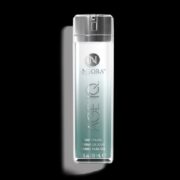When you think of 1940s fashion, you may think of the glam of the decade’s pin-up style and the practical style of the wartime Land Army Girls. You will think of the feminine tea dance dresses in floral prints finished off with wedge shoes, and brogues. However, the 1950s was also an era when designers stretched to their limit in terms of the simplicity of style or look by creating simple yet beautiful draping techniques. Also, they were responsible for the introduction of peplums onto dresses and shoulder pads.
Clothing in the ‘40s provides people today with a perfect example of how much culture, politics, and social situations influence fashion. This decade had much change that lead to what modern fashion enthusiasts view as the classic 40s look.
The 40s Silhouette
During the 40s, new fabrics were made since conventional fabrics couldn’t be produced as easily. Also, the most creative pattern cutting was introduced due to the austerity guidelines the war enforced. In 941, there was a rule that covered how much fabric could be used, hem lengths, trimmings, gathers, pleats, and the number of buttons to be used. Because of this, the fashion world produced utility clothing labelled with the CC41 logo. Ironically, original vintage garments that have this label can command high prices in today’s market.

The Introduction of Improved Utility Clothing
Because the general public was initially less fond of utility clothing, designers have to improve the style and simplify the manufacturing process. This leads to the birth of the more elegant 40s styles that people know and love today. Innovative pattern cuts included draping, shoulder pads use, gores, and peplums. The silhouette became a box-like or square, the waist a bit higher, and with a more focus on the head and shoulders.
Major 1940s Clothing
In the 1980s, women at work wore dungarees, trousers, jeans, and the turban style headscarf. The workwear jeans were cut to be more feminine. Moreover, women showcased the tea dress. The dress for dances was floral, had puffed cap sleeves, a sweetheart neckline, and was gored. Shirt dresses were quite famous and versatile; however, have more utility style. They looked more like dresses in the 30s reworked into a more contemporary style dress.

As American style and creative drapery emerged in evening garments, a strong and serious eveningwear look was introduced made. Girls wore low slung sarong skirts, sequin motifs or jewellery, and simple bodice styles with padded shoulders.



